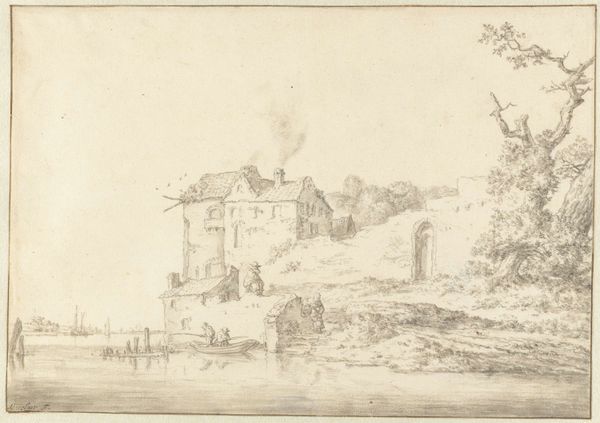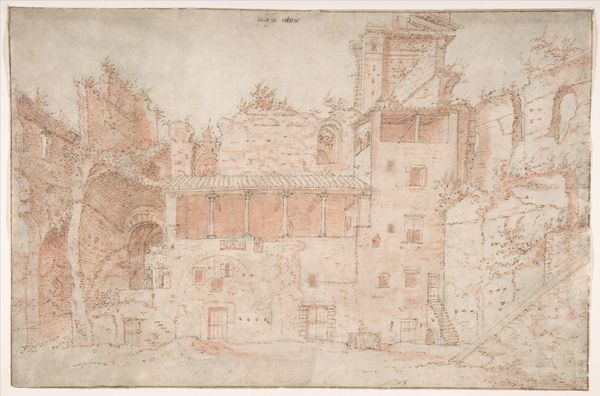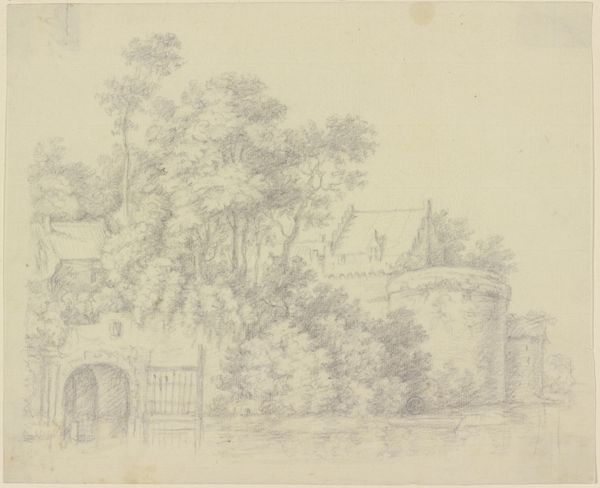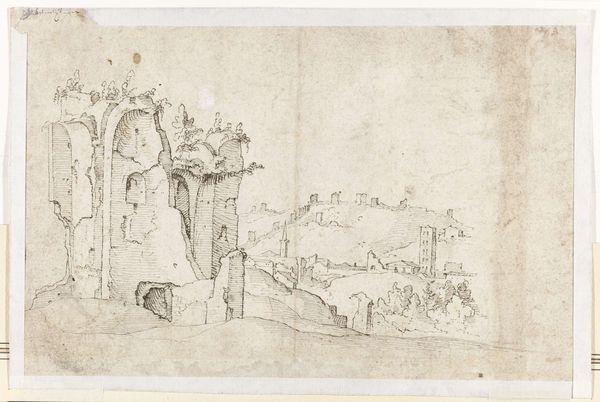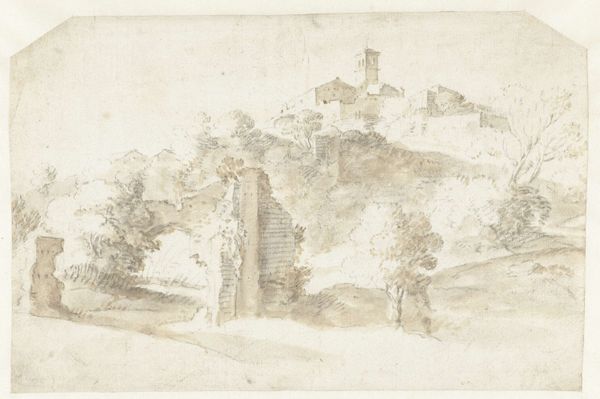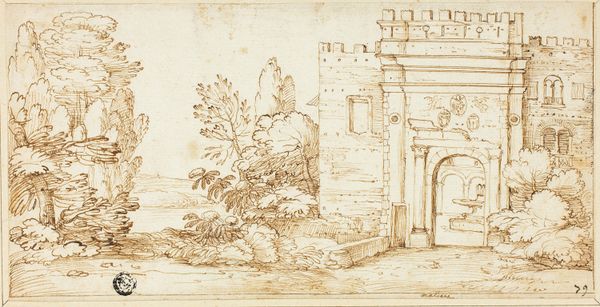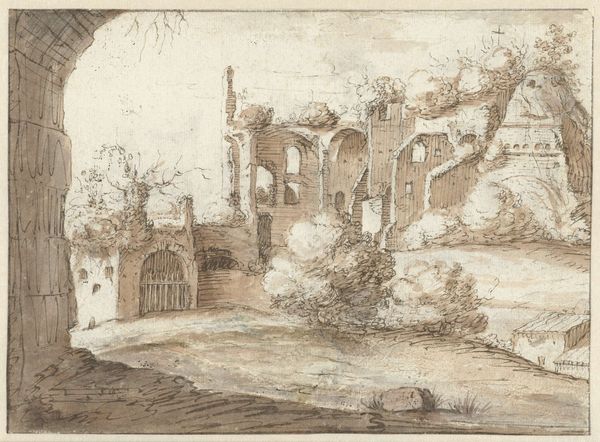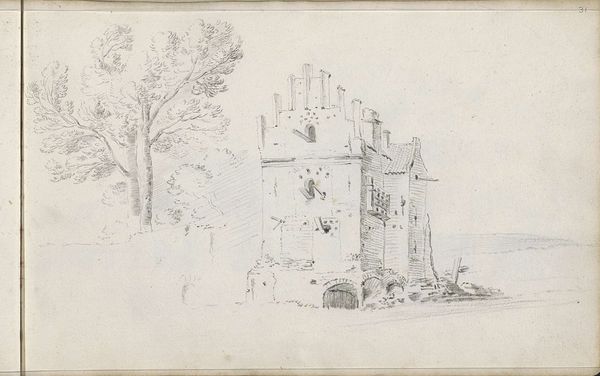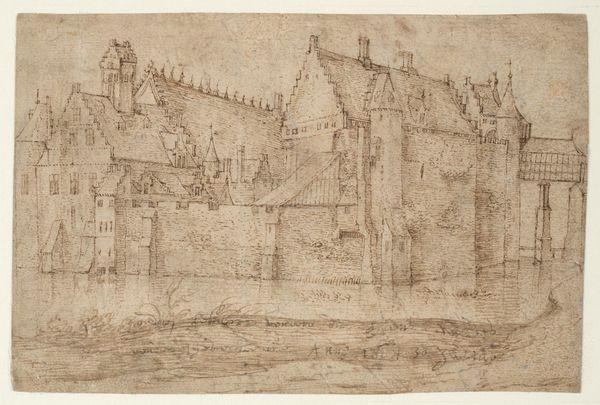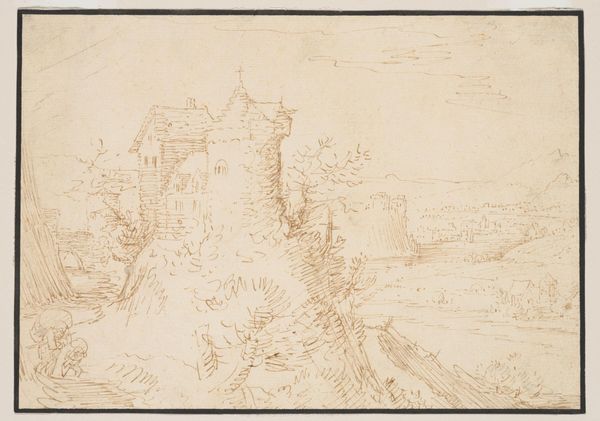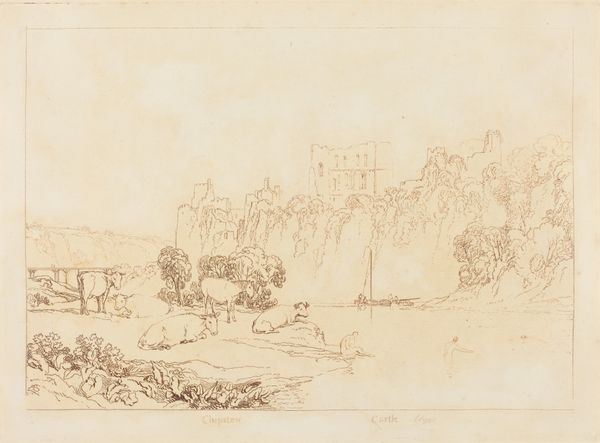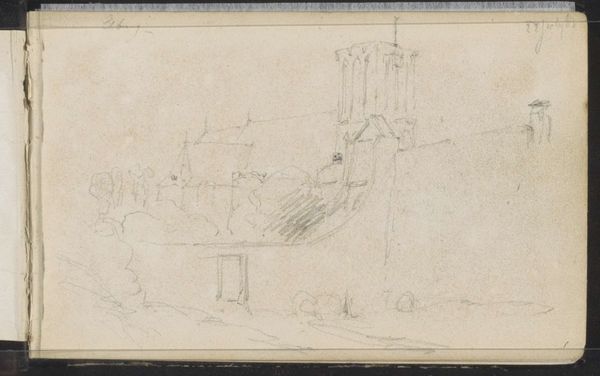
Dimensions: support: 118 x 207 mm
Copyright: CC-BY-NC-ND 4.0 DEED, Photo: Tate
Curator: This is Francis Place's "Dinsdale, Durham", a drawing in the Tate's collection. What are your first thoughts? Editor: The scene evokes a sense of quiet decay. It is linear, delicate, and quite serene, despite the ruins depicted. Curator: Indeed. Place, active in the late 17th and early 18th centuries, was fascinated with recording landscapes and architecture. Drawings like this offered a visual record of specific places, their structures, and immediate surroundings. Editor: Note how the use of line creates both depth and a sense of disintegration. It suggests the slow process of decay, the shifting materials of buildings and the land, and an enduring record of human labor and its effects. Curator: It’s fascinating to consider how a seemingly straightforward depiction carries such layered information about the landscape's transformation. Editor: Precisely. There’s more than meets the eye here in terms of cultural memory. Curator: Well, it seems even a simple drawing can reveal complex histories of place and making. Editor: Yes, the symbolic weight combined with the material reality creates a powerful piece.
